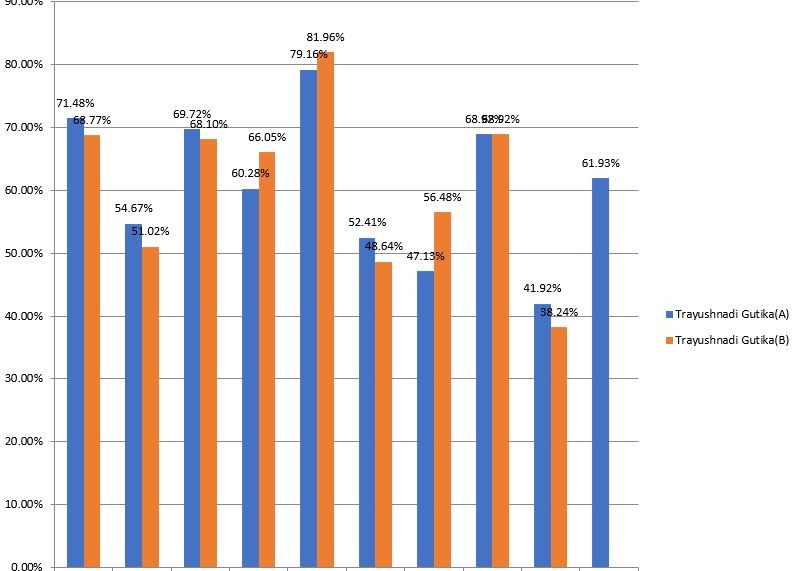Comparative Evaluation of Two Samples of Trayushnadi Gutika in the Management of Madhumeha w.s.r. to Type 2 Diabetes Mellitus
DOI:
https://doi.org/10.21760/jaims.10.3.3Keywords:
Madhumeha, Diabetes Mellitus Type 2, Lifestyle Disorders, Ayurveda, Trayushnadi Gutika, Prameha, Metabolic Disorders, Traditional MedicineAbstract
In the modern era, lifestyle disorders have emerged as a significant global health concern, primarily due to inadequate awareness regarding Aahara (dietary habits) and Vihara (daily regimen). Among these disorders, Madhumeha (Diabetes Mellitus Type 2) is one of the most prevalent metabolic conditions, extensively documented in Ayurvedic texts. Diabetes Mellitus is characterized by persistent hyperglycemia resulting from insulin resistance or deficiency. The global prevalence of diabetes has been steadily increasing due to urbanization, sedentary lifestyles, unhealthy dietary patterns, obesity, and lack of physical activity. Despite advancements in modern medicine, there is no definitive cure for Diabetes Mellitus. Conventional treatment primarily focuses on glycemic control through lifelong medication, including oral hypoglycemic agents (OHAs) and insulin therapy, which often lead to adverse effects such as gastrointestinal disturbances, weight gain, cardiovascular complications, and renal dysfunction. This has led to an increased interest in Ayurvedic interventions, which offer a holistic approach to managing Madhumeha by addressing its root cause rather than merely controlling symptoms. Among various Ayurvedic formulations, Trayushnadi Gutika has gained attention for its potential efficacy in managing Madhumeha. The present study, Comparative evaluation of two samples of Trayushnadi Gutika in the management of Madhumeha w.s.r. to Type 2 Diabetes Mellitus, aims to assess the therapeutic potential of this classical Ayurvedic formulation. To enhance its efficacy, an alternative sample has been formulated with the same ingredients but with a modified Bhavana (processing method) using Amalaki Swarasa (fresh Amla juice) instead of Gokshur Kwatha.
Downloads
References
Mohan V, Sudha V, Shobana S, Gayathri R, Krishnaswamy K. Are unhealthy diets contributing to the rapid rise of Type 2 Diabetes in India? J Nutr. 2023;153(4):940-8. doi: 10.1016/j.tjnut.2023.02.028.
Murthy KRS. Bhavaprakasa of Bhavamisra. Purvakhand Dvitiyabhaga, Section I, Part II, Chapter 7 (III). 2nd ed. Varanasi: Krishnadas Academy; 2001. p. 551.
Basavaraju NK. MeharogaNidanaLaksanaChikitsadyayah (9th Chapter). In: Basavarajeeyam. Hyderabad: NIIHM; 2013. p. 328-31.
Davidson’s Principles and Practice of Medicine. 21st ed. Edinburgh: Churchill Livingstone; 2010. p. 798.
Chaudhary V, Johri S, et al. Evaluation of comparative efficacy of Neelkanthi (Ajuga bracteosa), Tejapatra (Cinnamomum tamala) and Methikabeeja (Trigonella foenumgraecum) Churna in the management of diabetes mellitus. Int J Ayurveda Pharma Res. 2015;3(2):80-5.
Roglic G, editor. Global report on diabetes. Geneva: World Health Organization; 2016. Available from: https://www.who.int/publications/i/item/9789241565257
Joshi SR, Parikh RM. India - diabetes capital of the world: now heading towards hypertension. J Assoc Physicians India. 2007;55:323-4. [PubMed]
Kumar A, Goel MK, Jain RB, Khanna P, Chaudhary V. India towards diabetes control; key issues. Australas Med J. 2013;6(10):524-31. [PMC free article] [PubMed]
International Diabetes Federation. IDF Diabetes Atlas. 8th ed. Brussels: International Diabetes Federation; 2017.
American Diabetes Association Professional Practice Committee. Pharmacologic approaches to glycemic treatment: Standards of care in diabetes-2025. Diabetes Care. 2025;48(Suppl_1):S181-S206. doi: 10.2337/dc25-S009. PMID: 39651989; PMCID: PMC11635045.
Borgharkar SS, Das SS. Real-world evidence of glycemic control among patients with type 2 diabetes mellitus in India: the TIGHT study. BMJ Open Diabetes Res Care. 2019;7:e000654.
Chakradatta. Pramehaadhikar. Chapter 35, Verses 52-53, Shlokas 47-48. p. 216















